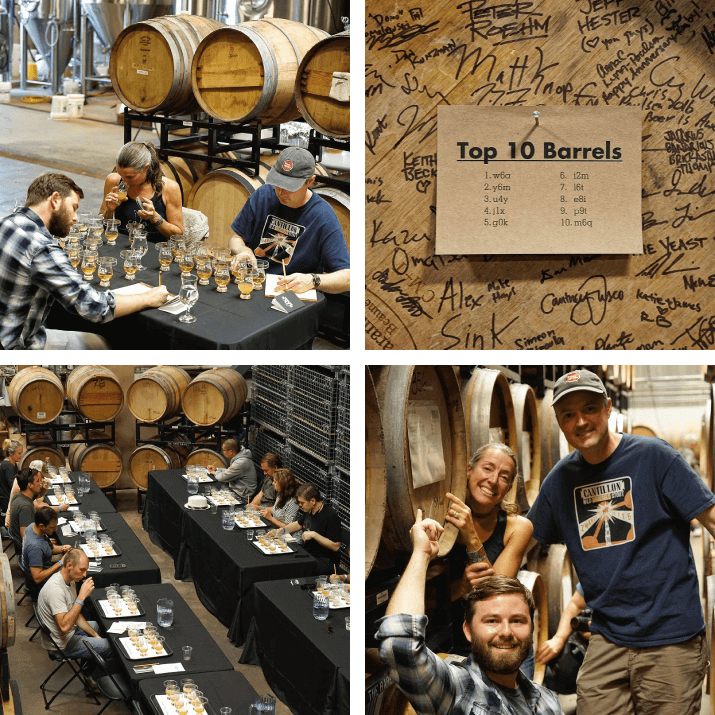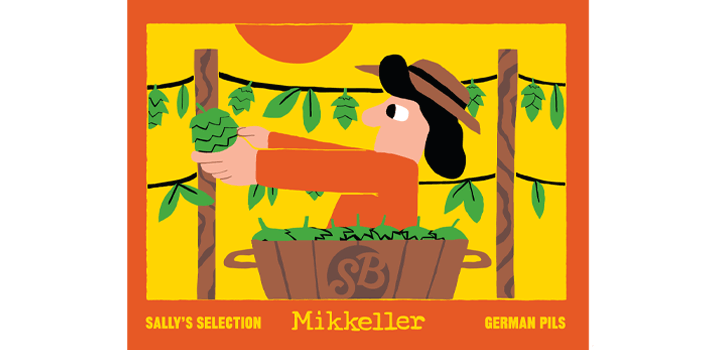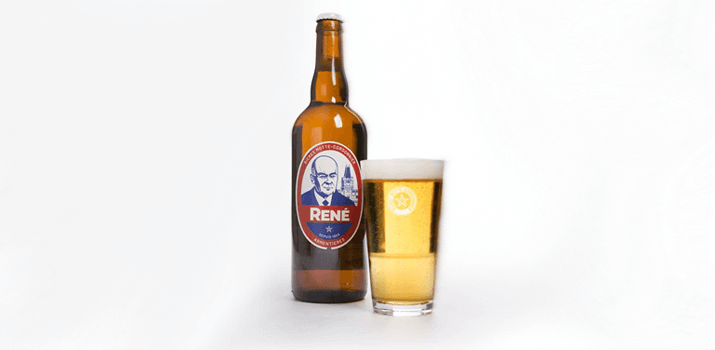Lesson 1 Recap
Lesson 1 was a brief history of beer. It's far too much to discuss in one quick journal post so here's a quick synopsis:
Some of the earliest forms of beer were, well, enjoyed by the Neolithic peoples of what is now Kurdistan. They put the area's abundant supply of barley and wheat to good use and steeped it in water. Eventually--about 7000 years later--the Sumerians really advanced brewing coming up with more technical brewing vocabulary, different malts and more approriate storage, brewing and serving vessels. At the time of the Sumerians and well into the European Middle Ages women were in charge of brewing. Women's role in the history of beer is so revered that we still, to this day, give a tip o' the cap to the Sumerian goddess of beer, Ninkasi.
Lesson 2 Recap
Lesson 2 discussed the four main ingredients in beer. Here's a quick review of yeast, malt, water and hops:
Yeast:
Yeast is responsible for alcohol, carbonation and some flavour in beer.
There are two species of yeast strains responsible for making beer: Saccharomyces Cerevisiae and Saccharomyces Pastorianus (Ale and Lager, respectively).
Ale yeast is called "top-fermenting" while lager yeast is called "bottom fermenting".
Ale yeast ferments at higher temperatures than lager yeast.
Yeast was finally isolated as being responsible for converting sugars into alcohol in the middle of the 19th century.
Malt:
Malts are responsible for colour, body, mouthfeel, flavour and giving yeast the sugars they need
Grains used in beer are typically barley, wheat, oats and rye.
Raw grains go through a process called "malting" in order to acquire the enzyme necessary to convert starches to sugars.
Kilning, or toasting, the malts achieves desired colour.
Water:
Water is the basis of the brewing process and responsible for creating "wort".
It has a varying chemical makeup which can have an effect on the flavour and character of a beer.
Local water can be treated with water treatments to adjust the chemical makeup according to a brewer's needs.
Hops:
Hops are important for adding flavour and bitterness as well as its antibacterial and preservative qualities.
They are grown on vines all over the world but primarily in the US, UK, China, Germany and Czech Republic
Hops can be used as whole flowers, dried leaves or pelletised.
Bitterness is measured in IBUs (International Bittering Units).
Lesson 3 Recap
In Lesson 3 we discussed our favourite taprooms (Hello Magic Rock!) but also gave a quick bit of insight on how to make the most of your visit to YOUR favourite one. Remember this?
1. Go tasters. Many taprooms now offer tasting 1/3 pints, usually in a flight on a nice wooden paddle.
2. Go rare. This the opportunity to get all those rare beers that you can’t often get anywhere else. Time to leave it in the bartender's hands – ask advice, get the stuff you can’t get anywhere. Put it on Untapped and make friends jealous.
3. Start low. Just as you would in a tasting, start with the lower alcohol beers. Common sense really - that 11.5% imperial, barrel aged stout first out may ‘cloud’ the next couple of hours.
4. Hit the food truck. It’s going to be a long day.
Lesson 4 Recap
We got to the good stuff in Lesson 4--tasting beer! Here's a reminder about how to enjoy this most glorious beverage:
Our tongues taste six basic flavours: sweet, salty, sour, bitter, umami and fat. With the exception of fat, beer can and does taste like all of these. Taking a sniff before taking a sip (and again after, if you like) is important because our sense of taste is affected by what the millions of ortho-nasal receptors in the retronasal cavity perceive alongside our taste buds.
The best way to make sure we notice all that is delicious in that glass of beer is to taste beer in a rather deliberate way: sniff the aroma, marvel at the appearance, take a sip, observe the mouthfeel, swallow (this is important because of that whole "back-of-the-mouth" thing!) and make your final determination. It can be as simple as: "I liked it!"
Lesson 5 Recap
In Lesson 5 we looked at the Lovely Lager. In brief, here's how to remember what makes a lager a lager. And a lovely one at that.
Lagers are fermented using the lager yeast strain--or Saccharomyces Pastorianus--and do so at a lower temperature and a longer period of time than ale yeasts. This lengthy fermentation allows for the yeast to eat up most of the residual creatures that could contribute other flavours leaving behind a crisp and clean flavour profile.
The Germans are the masters of the lager. In fact, the term lager comes from the old German word lagern, which means "to store". Nevertheless, many other brewing cultures make great lagers including the Czechs, Austrians and, yes, even the Americans.
Lesson 6 Recap
Lesson 6, of course, covered the most Amazing Ale. A brief summary here will hopefully help you to remember what makes it delicious:
Obviously, ales are fermented using an ale yeast strain which is known as Saccharomyces Cerevisaie. These strains do their jobs quickly and at higher temperatures and most ale yeast strains have a distinctive flavour profile. Some could give off various esters like bananas or stone fruits while others are noted for being a bit spicy. Either way, these characterful strains are what separate the more flavourful ale from its clean lager cousin.
There are gazillions (ok, maybe not that much) of ale styles. The most famed ales come from Belgium but the UK's famous Real Ales and the USA with their IPAs, Pale Ales, Stouts and the like hold their own on the world beer stage as well. Sweet, bitter, sour or roasted: these are just a few of the flavours that can come out of your glass of ale.
Lesson 7 Recap
A perfect pour is what we, erm, perfected in Lesson 7. Let's double-check we know how to do it:
Rule 1: Clean glass. Not just clean, beer clean.
Rule 2: Serve your beer at the appropriate serving temperature for the style.
Rule 3: Select the proper glassware for the style of beer you're serving.
Rule 4: Pour the beer correctly by tipping the glass at a 45? angle, pouring the beer down the side. Start to straighten the glass as the beer is about halfway up. Once the glass is upright, pour the rest of the beer straight in the middle to release the aromas being careful not to pour any present sediment into your beer.
Rule 5: Taste and enjoy!
Lesson 8 Recap
Lesson taught us how to best store beer so that it arrives nice and tasty into our glass. Let's look over it again:
Different styles have different cellaring requirements. Some styles, like IPAs or lagers, should be enjoyed as fresh as possible and aren't recommended to be aged. Other styles, especially your higher alcohol ones, wouldn't mind being tucked away for even up to a decade or more! Double check which style you've got to see how long it can be aged for and at which cellar temperatures.
You could make your own beer cellar at home--especially if you have a cool, dark room that isn't damp but has a little bit of humidity (if you're keeping corked beers). A wine refrigerator would do the trick too!
Lesson 9 Recap
Lesson 9 went over a bit of the pros, cons and things to think about if you're buying beer in a bottle or can. Quick reminder:
Bottle conditioned beer is when a beer undergoes a second fermentation process in the bottle. A bit more yeast and some additional sugars are added to the bottle and the beer ends up naturally carbonated with a creamy mouthfeel. There's sediment in these bottles though!
Brown bottles are best for beer because some compounds in hops, when they come in contact with UV rays, can cause a chemical process which makes the beer taste skunky. Only brown bottles can filter out most of these rays and prevent a beer from getting "light struck".
Oxidation is an issue in bottled beer because of microscopic holes under the caps that can let enough oxygen in over time to spoil the beer. Oxidised beer tastes like wet cardboard or otherwise stale. That's why it's important to store these beers at appropriate temperatures!
Canned beer all but eliminates the issues with beers getting lightstruck or oxidised. They may not be the prettiest serving vessel at a dinner party but they sure are easy to carry, store and chill!
Lesson 10 Recap
We looked more in-depth at an IPA and a Munich Helles lager incorporating all we knew about fermentation, serving temperatures and even glassware. We won't rehash those here but, safe to say, we may be revisiting another style we looked at in the quiz!
And breathe...we made it. Well, almost. Next week's quiz is for all the glory! Well, whatever glory you can muster up in your own home. See you then--good luck!





